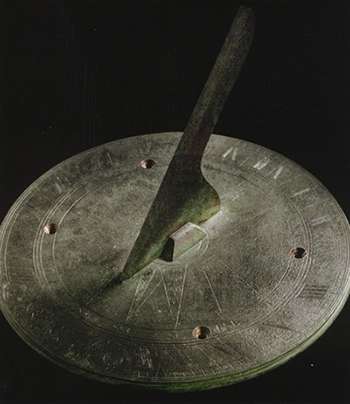Language: |
For about two centuries (1464-1667) the prime meridian (0 longitude) used for navigation maps, was in the Fortress of Oradea, near the former Bishop's Palace. The man who brought the prime meridian to Oradea was the bishop John Vitéz, who was also the teacher of John Hunyadi's (Hungarian king) children. John Vitéz studied in Italy, and participated in the renaissance movement, primarily being interested in astronomy. Being a pioneer in the fight against misbeliefs in astronomy, he wanted to create an eclipse prediction table. He contacted Georg Peuerbach, a Viennese physicist, and asked for his help. Peuerbach created tables for the prediction of solar and lunar eclipses, and he sent some of the epoch's astronomical instruments: the astrolabe, the solar quadrant...along with indications on how to use them. Later he sent his most promising student, Johannes Müller, also called Regiomontanus.

The astronomical observations of Regiomontanus, and one of the bishop's scholars, were gathered in "Tabula Varadiensis", which contains the position of the Moon and the planets. For calculating longitude, a need arose for a prime meridian. Because of John Vitéz, who brought him to Oradea, Regiomontanus placed the prime meridian in the Fortress of Oradea. The first European astronomical observatory was built by John Vitéz in Oradea, with the financial support of Matthias Corvinus (son of John Hunyadi). Thus Oradea became one of the cradles of astronomy as a modern science. The results of the astronomical observations were used by navigators in the age of great discoveries.

Christopher Columbus declared that he had an example of the "Tabula Varadiensis", for calculating longitude, using the position of the Moon. Amerigo Vespucci remembers about how he had learnt to calculate longitude from these tables. After the death of John Vitéz, Regiomontanus headed to Budapest to become the court astrologer of Matthias Corvinus, and in 1471 he arrived at Nürnberg, where he built the second European astronomical observatory. He continued to gather his observations in tables. His tables (from Oradea and Nürnberg) were used by Tycho Brache, and later by Johannes Kepler, who discovered the laws of planetary motion. Regiomontanus then translated the Almagest of Greek astronomer Ptolemy, into Latin (even though he believed in the heliocentric theory a century before Copernicus), and he has put down the foundations of spherical geometry.